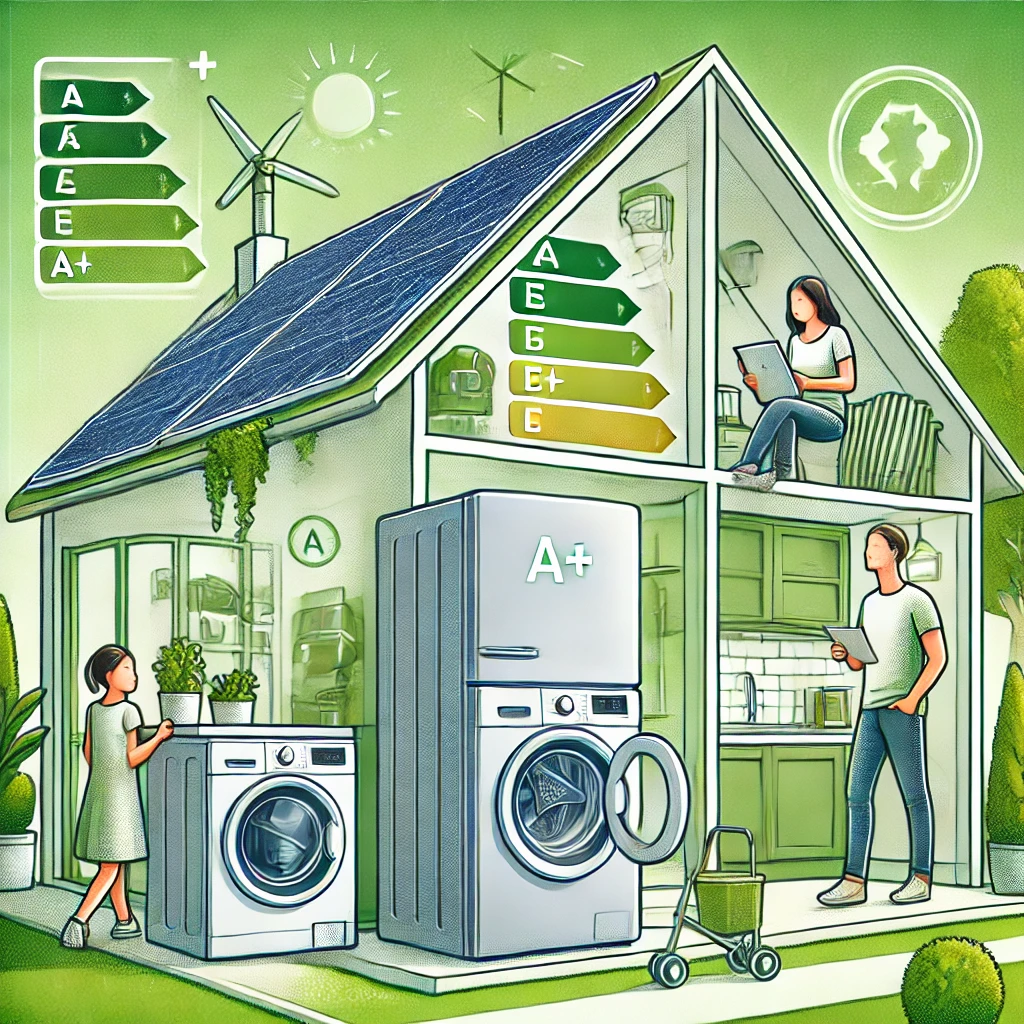Have you ever stood in the appliance aisle, staring at rows of refrigerators or washing machines, wondering which one is truly the best choice for your home and the planet? You’re not alone. With so many options and technical jargon like “energy ratings” and “efficiency standards,” it’s easy to feel overwhelmed. But understanding these terms can help you save money, reduce your carbon footprint, and make your home more comfortable.
In this guide, we’ll explore energy ratings and efficient appliances, why they matter, and how you can use them to make informed, eco-friendly decisions. By the end, you’ll feel empowered to confidently navigate the world of energy-efficient appliances and make choices that benefit both your wallet and the environment.
What Are Energy Ratings, and Why Do They Matter?
Energy ratings are standardized labels that show how much energy an appliance uses compared to similar models. These ratings—often displayed as a scale from A (most efficient) to G (least efficient)—are designed to help you make informed purchasing decisions.
But why should you care? Here’s the impact energy-efficient appliances can have:
- Save Money on Utility Bills: Efficient models consume less electricity, leading to significantly lower monthly costs.
- Reduce Your Environmental Impact: Using less energy means fewer greenhouse gas emissions.
- Enjoy Better Performance: Energy-efficient appliances are often equipped with advanced technology, offering quieter operation, smart features, and longer lifespans.
For example, an A-rated refrigerator can use up to 50% less energy than a D-rated model, potentially saving you hundreds of dollars over its lifetime while preventing tons of CO2 emissions.
How to Use Energy Ratings to Make Data-Backed Decisions
Here’s a step-by-step guide to help you confidently select the best appliance for your needs:
1. Look for the Energy Label
The energy label provides a snapshot of an appliance’s efficiency and annual energy consumption. Look beyond the letter rating—check the detailed figures like kWh/year usage to understand its true efficiency.
2. Compare Models within the Same Category
Focus on comparing appliances that meet your size and feature needs. For instance, compare washing machines only with other washing machines, not with dishwashers. Pay attention to differences in kWh/year even if two models share the same rating.
3. Consider Total Cost of Ownership
Energy-efficient models might have a higher upfront cost, but they can save money over time. Factor in:
- Purchase Price
- Energy Cost Savings
- Rebates or Tax Incentives (check your local programs for additional savings)
4. Check for Certifications
Look for certifications like ENERGY STAR, which verify that an appliance meets strict efficiency guidelines. These add an extra layer of credibility.
5. Read Reviews and Expert Opinions
While energy labels are helpful, real-world performance matters. Read user reviews or consult expert opinions to ensure the appliance lives up to its promises.
Common Challenges and Misconceptions About Energy Efficiency
Let’s debunk some myths and address common hurdles:
Myth 1: Energy-Efficient Appliances Are Always More Expensive
While upfront costs might be higher, energy-efficient appliances often pay for themselves through long-term savings. Additionally, many governments and utility companies offer rebates to offset the cost.
Myth 2: All A-Rated Appliances Are Equally Efficient
Not all A-rated appliances are created equal—some may be more efficient within that range. Always compare specific energy usage figures.
Challenge: Understanding Jargon
Terms like “kWh/year” or “energy factor” can feel confusing. Here’s a quick example:
- If an appliance uses 200 kWh/year and electricity costs $0.15 per kWh, it will cost $30 annually to operate.
The Bigger Picture: How Efficient Appliances Impact the Planet
Household appliances account for roughly 30% of global electricity consumption, according to the International Energy Agency (IEA). By choosing efficient models, you contribute to reducing energy demand and greenhouse gas emissions.
For example: If every household in your neighborhood switched to an energy-efficient refrigerator, the combined energy savings could power dozens of homes for a year.
Small individual changes add up to a significant collective impact. Your decisions truly matter.
Practical Tips for Greener Appliance Choices
- Dispose of Old Appliances Responsibly: Recycling programs can ensure your old appliances don’t end up in landfills.
- Upgrade Strategically: Start with appliances that consume the most energy, such as refrigerators and dryers.
- Use Appliances Efficiently: Simple changes like washing full loads of laundry or keeping your fridge seals clean can further reduce energy usage.
Case Study: How the Smith Family Reduced Energy Bills
When the Smiths replaced their 10-year-old refrigerator with an A-rated model, they saw their electricity bill drop by $150 annually. Combined with a $100 rebate from their local utility company, they recouped the additional cost in just two years—all while reducing their household carbon footprint.
Conclusion: Take Control of Your Energy Future
Energy ratings and efficient appliances are tools that empower you to make smarter, greener choices. By learning how to interpret energy labels, comparing models, and considering long-term benefits, you can save money, reduce your environmental impact, and enjoy higher-quality appliances.
The next time you’re shopping for a new washer, fridge, or dishwasher, let energy ratings guide your decision. It’s a small step that can make a big difference for both your wallet and the planet.

